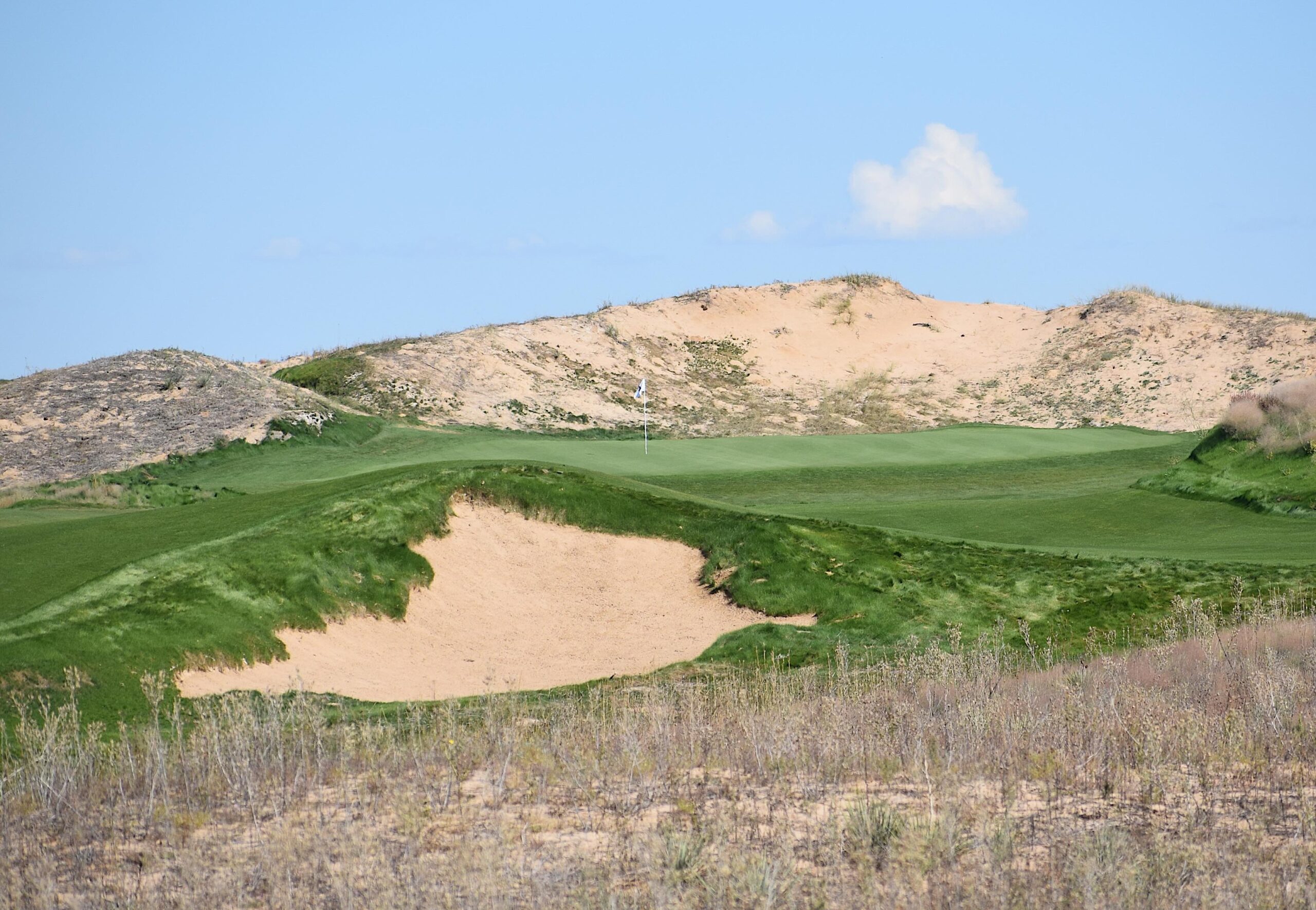Folks at Rodeo Dunes hope prairie links golf, not unlike that at Ballyneal and Sand Hills, will be a ‘Dream’ come true; first course at rural Colorado site just off I-76 nearing completion
By Gary Baines – 10/1/2025
ROGGEN — There’s a different sport involved, but there’s a lot of “If you build it, he will come” to what’s going on at the Rodeo Dunes golf resort that’s taking shape in the high plains northeast of Denver.
That quote, of course, comes from the 1989 Kevin Costner movie Field of Dreams, where a baseball field is built in rural Iowa that eventually attracts the ghosts of baseball legends.
In a variation thereof, the folks from Dream Golf are in the midst of building a golf resort in rural Colorado in hopes of attracting many players from the area — and far beyond — as sort of a Centennial State-based mecca for aficionados.
The first of what could become six 18-hole courses at Rodeo Dunes held a preview of sorts this week, dubbed “The First Ride”, for selected people in anticipation of a gradual opening of the public resort facility over the coming year and a half. The event not only was for golfers — who played 11 holes of the original course — as, true to its name, a pro rodeo (the Duel at the Dunes) was held on site on Tuesday evening.
Rodeo Dunes’ first course — a walking-only layout designed by Bill Coore and Ben Crenshaw — will be open for “a preview season” in 2026 (likely starting in May), mainly restricted to founders and their guests, along with media and industry folks, next year. Then general public play will begin in 2027, with Rodeo Dunes beginning to book 2027 tee times in March of 2026.
“We’re going to ease the course into operation,” Tom Ferrell, vice president of media and communications for Dream Golf, said on Tuesday. He added that there will be some public tee times in 2026, but they’ll likely be given away through drawings and the like.
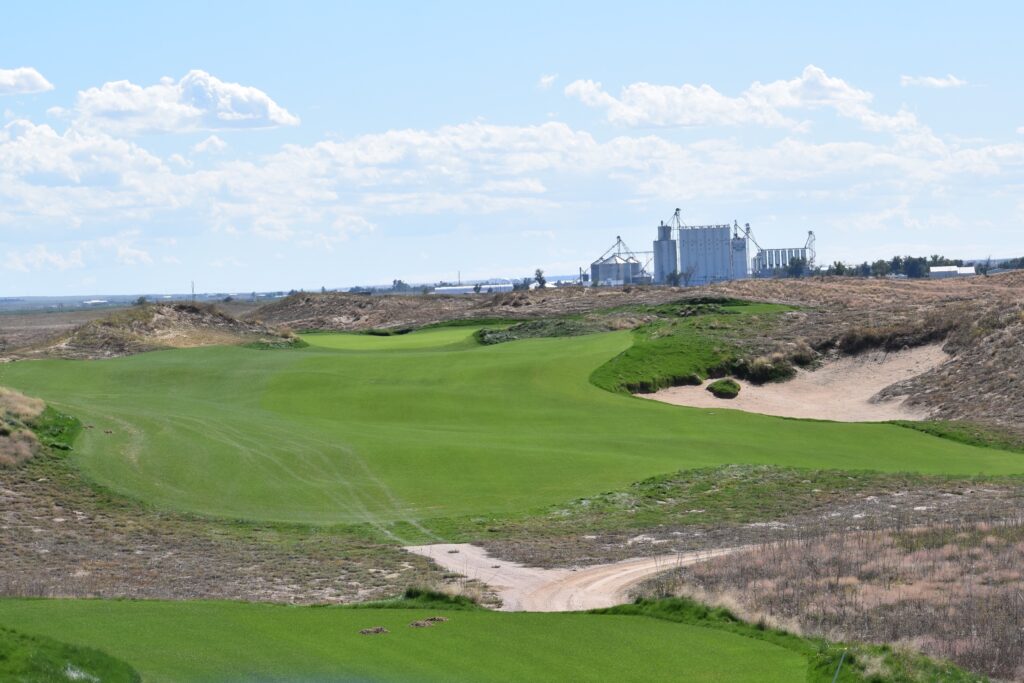
The Roggen Farmers’ Elevator is the most prominent structure currently visible nearby the Rodeo Dunes site.
The Coore/Crenshaw course and the second course (designed by Jim Craig, a longtime protégé of Coore/Crenshaw who recently made his solo design debut with the 12-hole Commons Course at Sand Valley in Wisconsin) will be “100 percent public resort courses,” Ferrell said. As for future courses, “Any private course built here will have public access. … Every course we ever build will be accessible on some limited basis to the public.”
For golfers who love — or long for — playing experiences at sites such as Ballyneal in Holyoke or Sand Hills in Mullen, Neb., Rodeo Dunes may be just what the doctor ordered. But even though it’s much closer to Colorado’s Front Range population base, Rodeo Dunes does take a bit of a commitment of time and travel as it’s roughly 50 miles one way from Empower Field at Mile High and about 40 miles from DIA.
“I think it traffics off of the ‘If you build it, they will come’ kind of thing,” Ferrell said. “They built Ballyneal (in northeast Colorado) and people came. They built Sand Hills (in north central Nebraska) and people came. I’m not big on trying to recreate a phenomenon; Sand Hills is a phenomenon. And every course that tried to recreate the Sand Hills phenomenon struggled in some way. Most of them are now doing well — thankfully. The region I’ll call ‘prairie links’ — for prairie links golf courses — who knew that the prairie links could extend to 45 miles from downtown Denver?
“I think this is going to get a very welcome reception from local golfers and from national and international golfers. While you don’t want to take any success for granted — obviously — you’ve got real opportunity here, which is to take this style of golf, that heretofore required a 3- to 7-hour drive, and put it in a situation where you can drop your kids off at school and play here and pick ‘em up.
“I think the city of Denver and the golfers of Colorado are getting an opportunity here that really could only exist right here.”
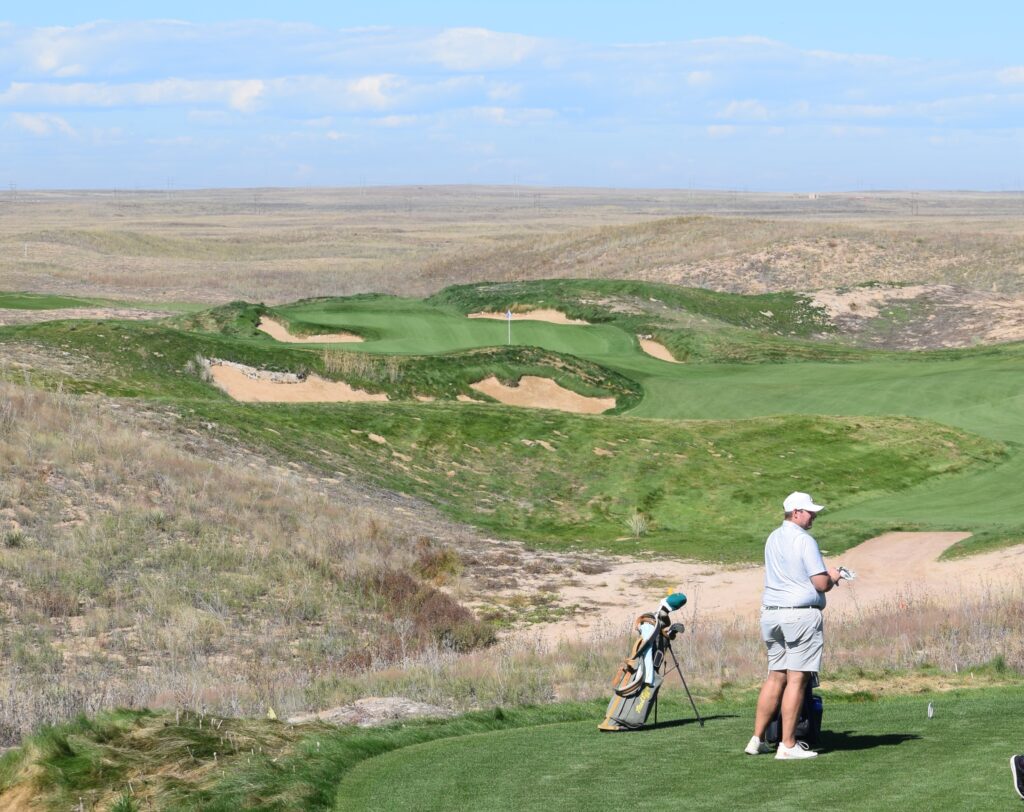
It’s all being seven years in the making, with the Keiser family — developers and operators of the Bandon Resort in Oregon and Sand Valley in Wisconsin — being the driving force. Michael Keiser, son of Mike Keiser, is the owner and developer of Rodeo Dunes.
“This has been an incredible seven years,” Michael Keiser said to the assembled group at Rodeo Dunes on Tuesday. “For those who know me, there’s nothing I wanted more professionally than to see this night happen — this golf course come together. It’s been tough and a lot of fun.”
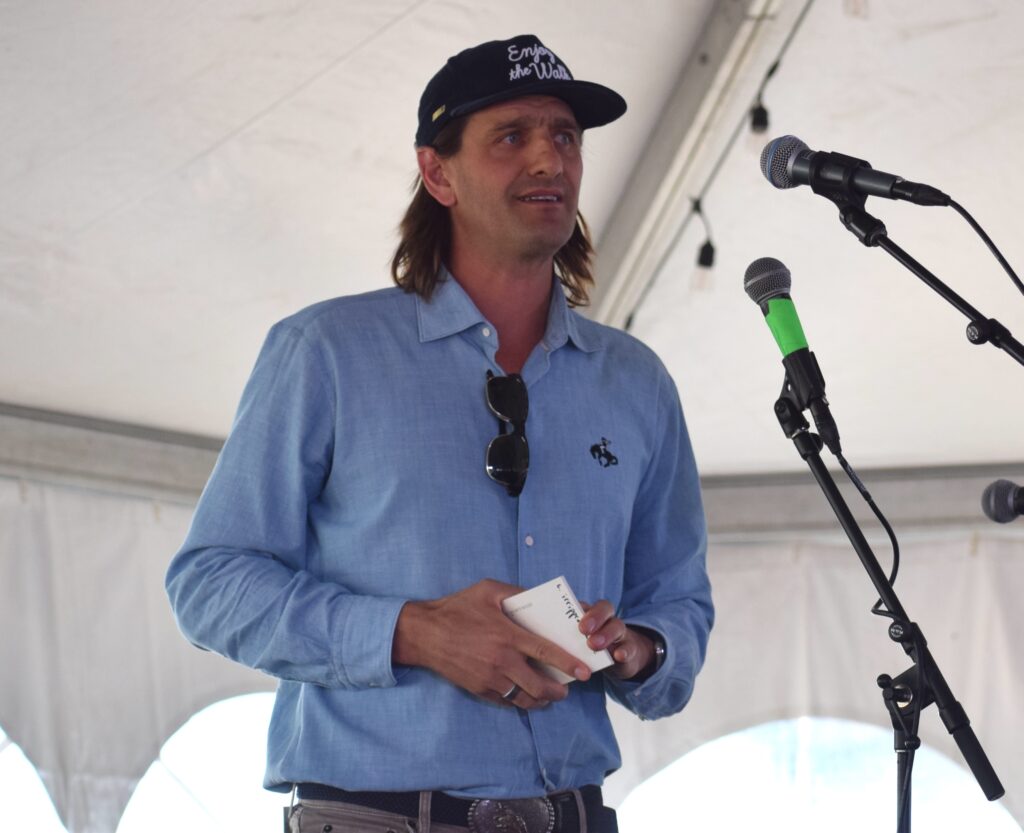
Michael Keiser, the owner and developer for Rodeo Dunes.
Rodeo Dunes is being constructed on a huge swath of prairie that has been operated as a ranch by the Cervi family since 1883. It’s wide open (very, very few trees), sandy — with some areas of the Coore/Crenshaw course constructed out of sand dunes — and there’s plenty of native brush. There are no significant water features on the course. The most prominent structure of note currently near Rodeo Dunes is the Roggen Farmers’ Elevator located just off of I-76.
“We have been so fortunate through the years to work with the Keiser family — at Bandon Dunes, at Sand Valley and now here at Rodeo Dunes,” Coore said on Tuesday. “I get asked so often, ‘How do you compare them?’ I’ve been accused of being a horrible salesperson in understating and underselling anything. But the way I put it is, ‘This is pretty darn good.’ We will let you judge for yourself how you feel about it. … We hope somehow that golf, in its own way, becomes a complement to what (the Cervi family) has done for generations here.”
Turning a part of a large ranch into a big-time golf resort in Roggen wouldn’t have occurred to many people decades ago as they were traveling on I-76 in northeast Colorado. But it did occur to the Keisers apparently.
“Even though at first (it might seem) golf and ranching might not go well together, in our family and our business we think of ourselves first and foremost as land stewards,” Michael Keiser said. “We share the same land ethic (as the Cervi family). … We realized what we have in common is the love for this incredible land.”
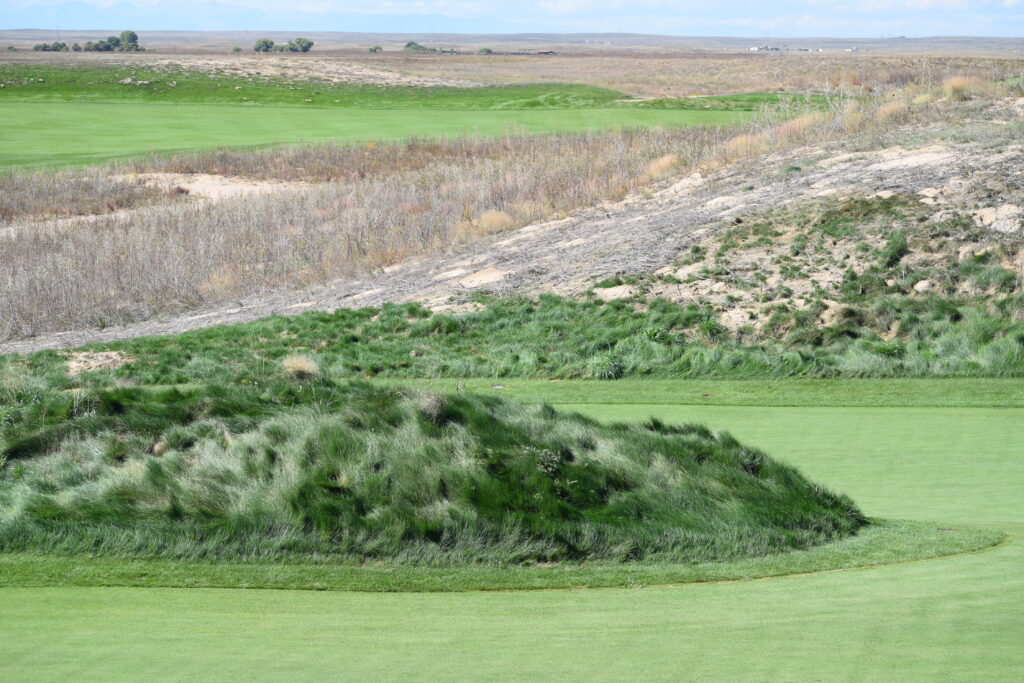
And, of course, since the Keisers are in a big-time golf business, to make it all work, the customers must be there — potentially for the six courses that might be build at Rodeo Dunes over the next decade or so.
To start with, there were 250 founders — who deposited up to $85,000 each — that helped build the foundation for Rodeo Dunes. According to Ferrell, about 60 percent of that group resides primarily in Colorado, with the rest from out of state. For the time being, no additional Founders are being added, but some new ones are expected to join the ranks once construction starts on the resort’s second course.
That construction on the Craig-designed course most likely will begin in 2027, with a possibility of that timeline being moved up, said Ferrell, who anticipates the course opening in 2028.
“Jim will probably take a less refined approach,” Ferrell said. “I asked him ‘What are you going to do to distinguish it from the Coore/Crenshaw course.’ He said, ‘I’m going to build all the holes Bill wouldn’t let me build.’ I love that. Jim is going to be a rising star.”
As for the third 18-hole course, Ferrell said the site has been “determined and ready,” though an architect has not yet been selected.
Meanwhile, beyond the 18-hole courses, there will be a short course and a putting course, the latter of which is expected to be open in time for the start of general public play in 2027.
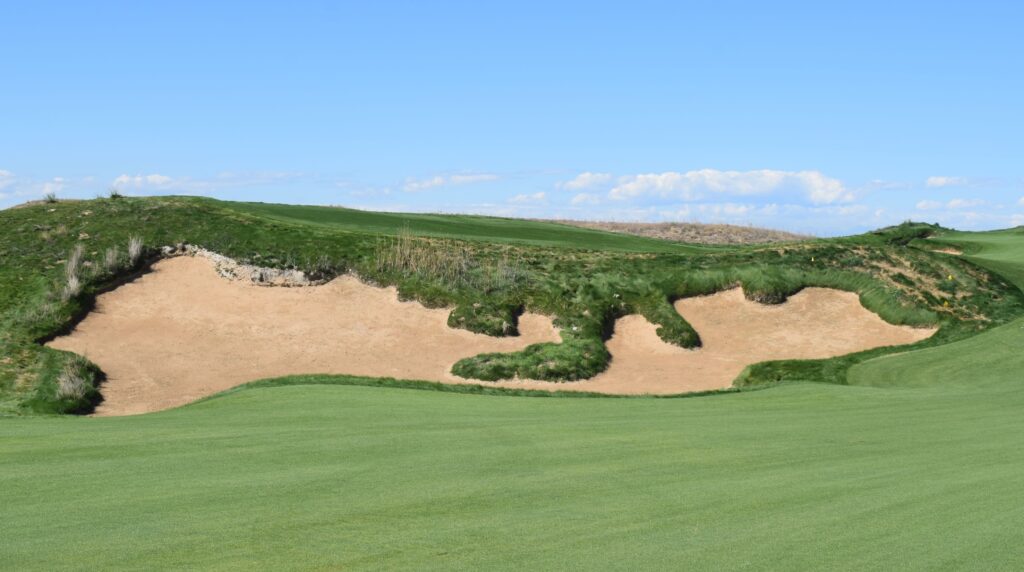
The bunkers play a large role in the unique look at Rodeo Dunes.
As for the Coore/Crenshaw course, while the conditions will certainly evolve, on Tuesday there was very thick, gnarly rough just off the fairways and around green complexes, to the point that in many areas it was preferable to miss a fairway by 10-15 yards than by 1-2 yards. But course officials indicated those conditions will likely be less severe when the course formally opens.
The bunker formations make Rodeo Dunes pleasing to the eye, as are the sand dunes — as well as grassy knolls placed strategically through the course. The first tee of the Coore/Crenshaw course sits at about 4,700 feet of elevation, and though there’s only about 100 feet of elevation change throughout the course, there’s a surprising amount of up and down throughout the layout. Rolling, uneven lies are not at all unusual — as well as occasional big-time contouring on the greens. There are occasional blind shots that can be annoying and frustrating.
Overall for golfers who enjoy unique experiences — and may not have visited Ballyneal, Sand Hills and the like — Rodeo Dunes certainly fits the bill.

The scorecard — as it stands — for the Coore/Crenshaw course at Rodeo Dunes.
The current scorecard for the Coore/Crenshaw course notes a conventional par-72 layout with four par-3s and four par-5s. There are a couple of drivable par-4s for long hitters — the 306-yard (from the middle tee) sixth hole and the 313-yard 17th. Currently the “back tees” are listed as 6,948 yards, but as a course tour guide noted, the length could easily be stretched out to 8,500 — “if needed.” Something in the 7,200-7,300 range might end up being “the tips” under normal circumstances.
But it certainly should be noted that Rodeo Dunes certainly caters to a certain type of golfer. While there is plenty to be said for walking the course while playing — with or without a caddie — that’s not everyone’s bag. And since Rodeo Dunes is walking only — at least that’s the plan for now for the current and upcoming courses — that will limit the clientele. But it does add something to the ambience of the experience, especially with no structures around the golf course footprint for the time being. (Organizers say the “vertical infrastructure,” including some lodging, will be built west of the Coore/Crenshaw course.)
“In terms of interest and accessibility, this is going to be a really special place,” Ferrell said. “People are going to be able to play true prairie links golf in their backyard, and we’re really excited. When I went to Sand Hills, I was like, ‘Oh, this is amazing.’ When I went to Ballyneal I was like, ‘Oh, this is great.’ And now you’re going to get to do that here.”
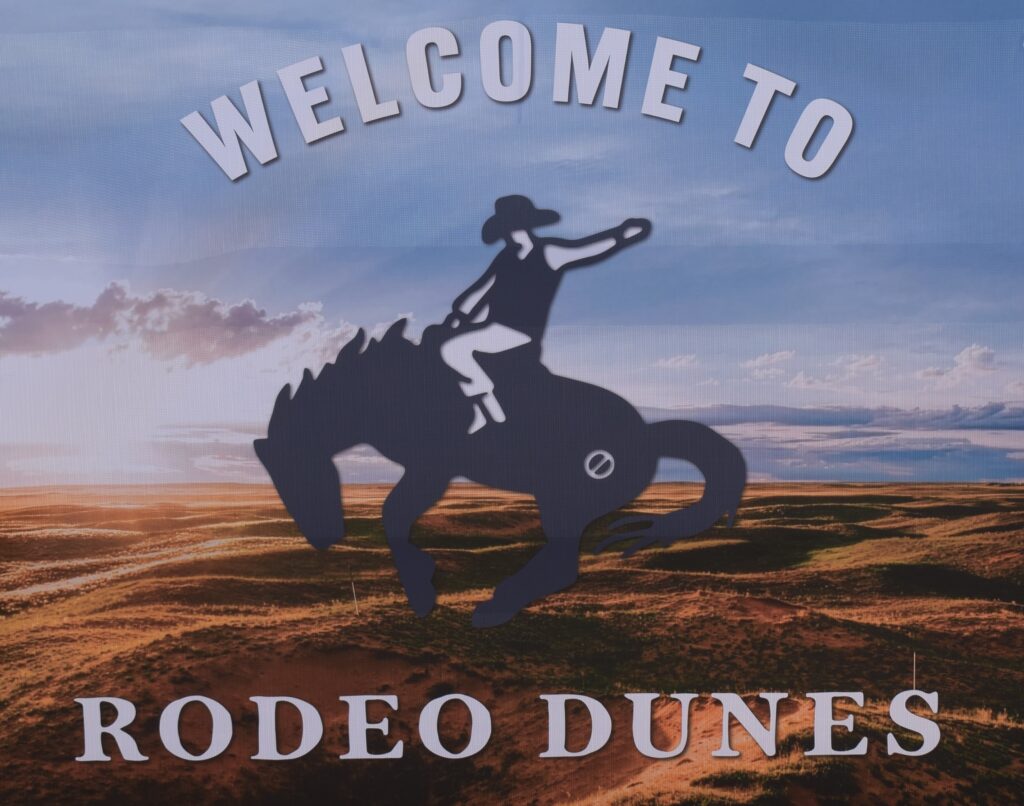
Though Ferrell said green-fee rates have not yet been settled upon, he noted that there will be at least some times where those rates will be lower for Coloradans — and even moreso for eastern plains residents.
“You’re going to be playing a top golf course, and we want people to be able to play it,” he said. “We don’t want the courses packed with slow play, but we want them to be full.”
For the record, assuming the Bandon courses are considered part of Dream Golf, the Coore/Crenshaw course at Rodeo Dunes will be the 14th course opening for the organization, with the previous ones being the seven at Bandon and the six at Sand Valley.
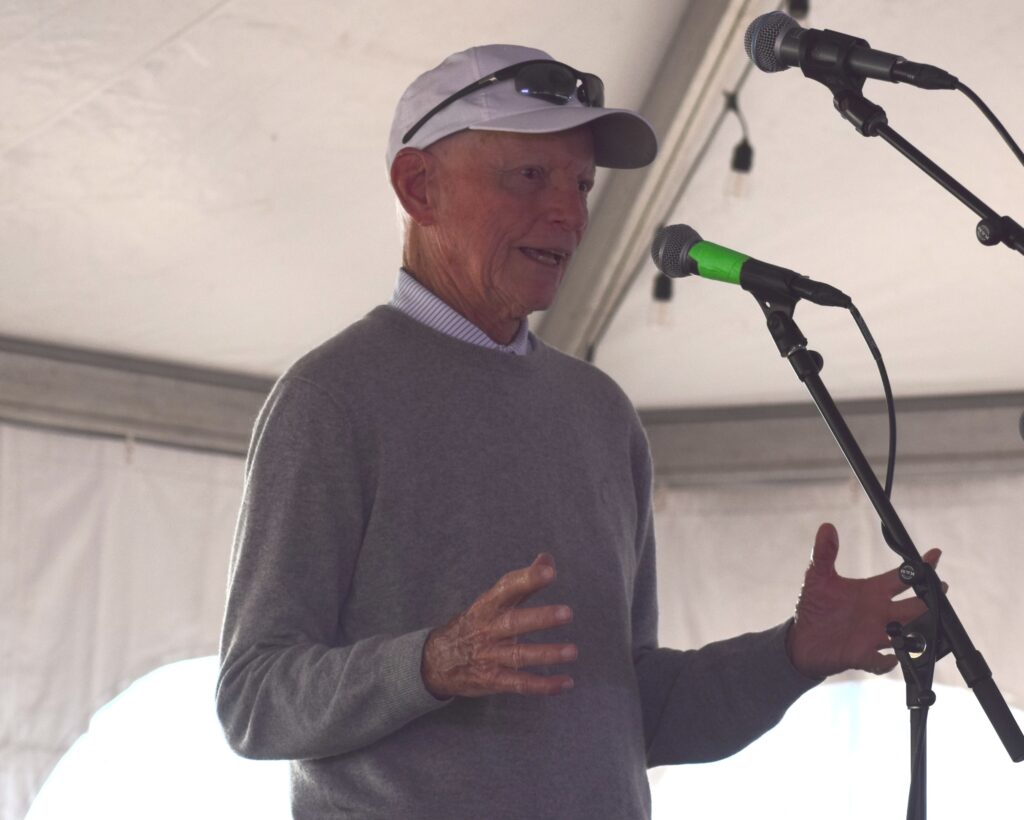
Bill Coore, who designed the first course at Rodeo Dunes with partner Ben Crenshaw.
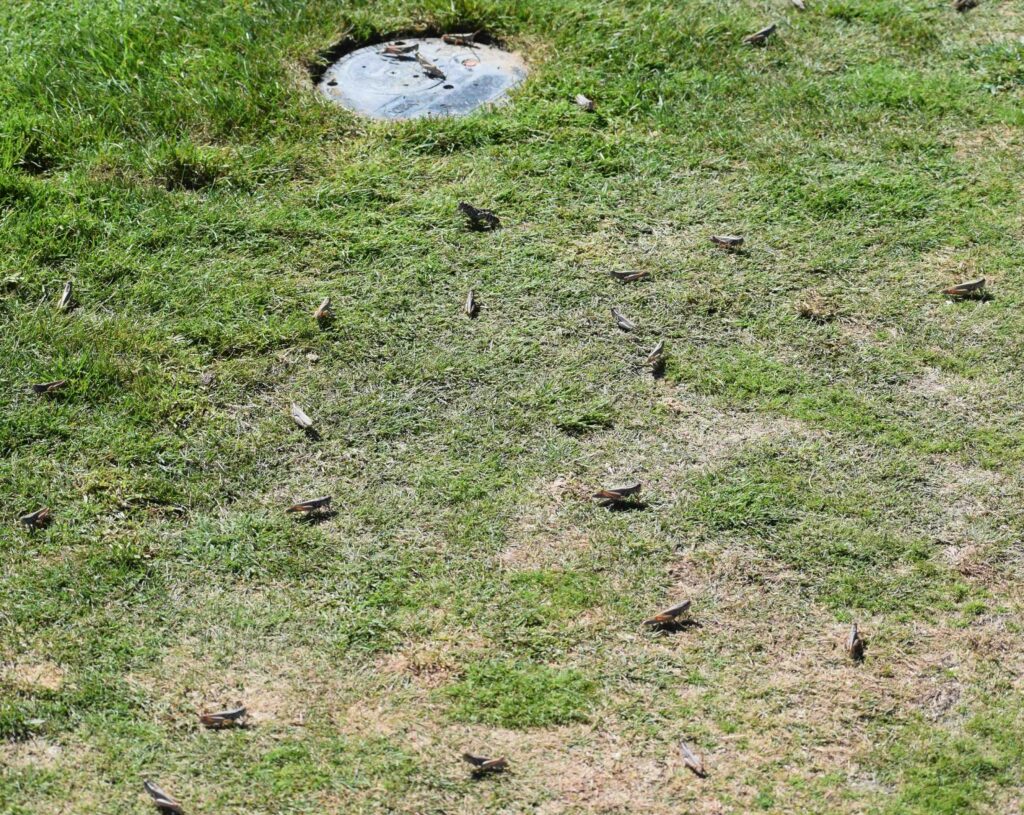
At least this time of year, there was no shortage of grasshoppers on the Rodeo Dunes property.
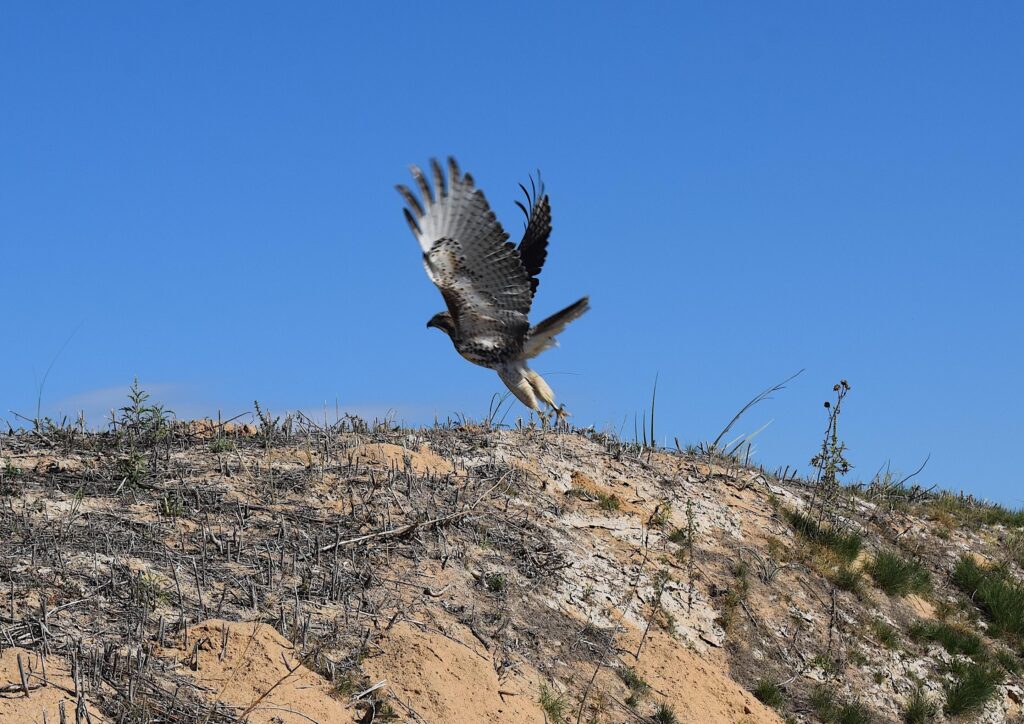
A hawk takes flight at Rodeo Dunes on Tuesday.
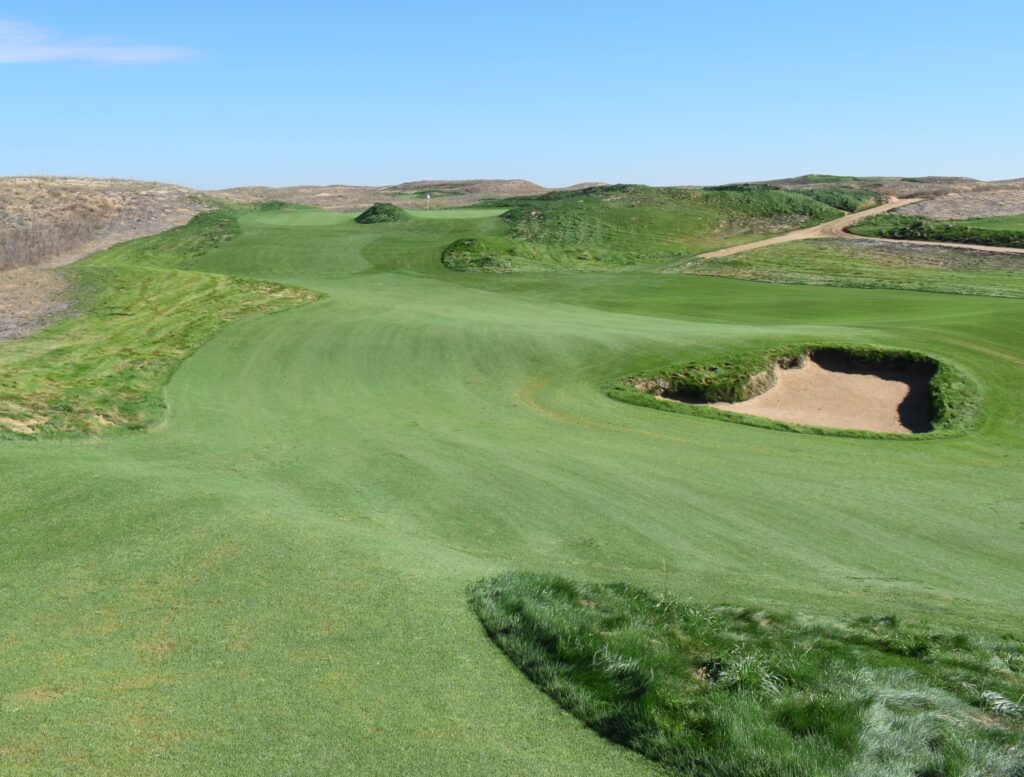
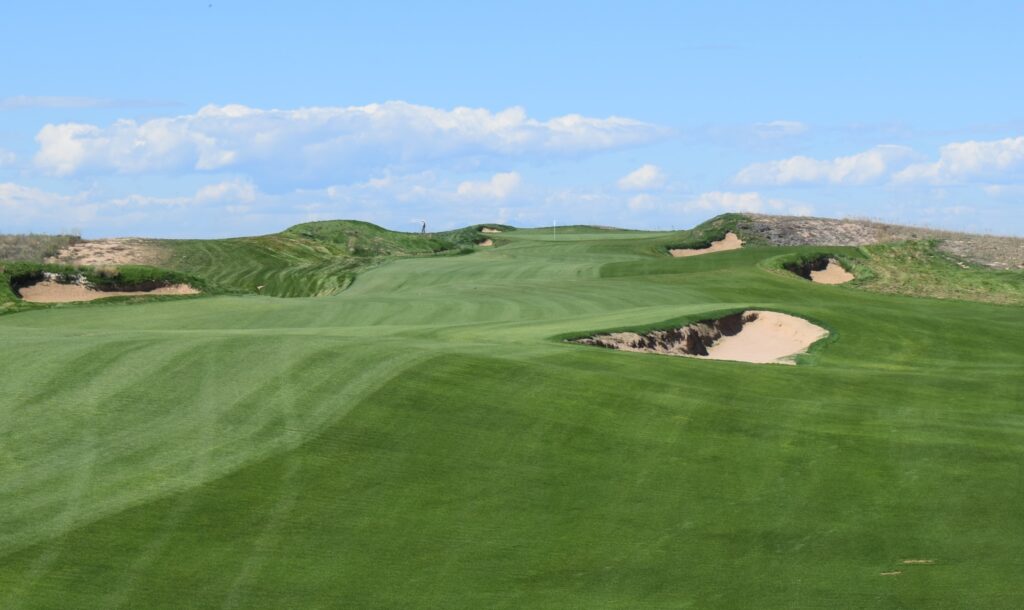
About the Writer: Gary Baines has covered golf in Colorado continuously since 1983. He was a sports writer at the Daily Camera newspaper in Boulder, then the sports editor there, and has written regularly for ColoradoGolf.org since 2009. The University of Colorado Evans Scholar alum was inducted into the Colorado Golf Hall of Fame in 2022. He owns and operates ColoradoGolfJournal.com







